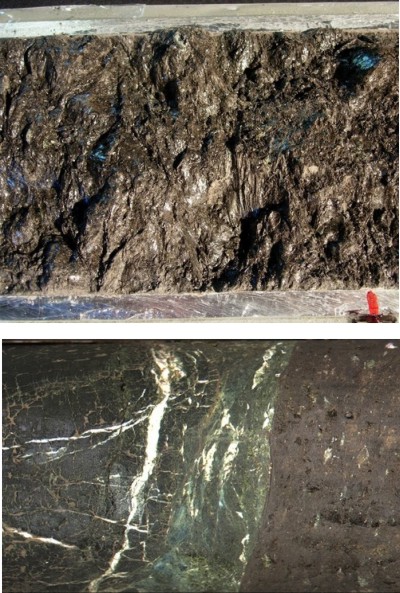For all that we currently know about earthquakes and faulting, seismology remains primarily a descriptive science. We can tell where an earthquake occurred, and how powerful it was, but we still don’t understand why some ruptures trigger failure over a large section of a fault, and others do not. Plate tectonics allows us to predict the overall motion across a fault zone, and even the type of faulting that is needed to accommodate it, but we can’t predict whether that motion will be expressed by a single large earthquake or dozens of little ones.
A large part of the problem is that we don’t know much about what faults are like where it really matters: although many large faults break and deform the Earth’s surface, the initial rupture in an earthquake always occurs several kilometres below, where increased temperatures and pressures make rocks behave somewhat differently that they do in the part of the fault we can see and touch. Geophysical techniques can tell us roughly where the fault zones are, but lack the resolution to tell us much about a feature which may only be tens of metres across. Which is why the rocks pictured below are so important: they were collected from 3 km below the surface, right in the heart of the San Andreas Fault.

The photos above are courtesy of Andrew Alden of About Geology, who was lucky enough to attend the press conference where the San Andreas Fault Observatory at Depth (SAFOD) project unveiled their treasures. For the past couple of years, they’ve been busy drilling a 4 kilometre hole down and then across an active segment of the San Andreas. With these samples, scientists can really start to get to grips on what controls the pace and tempo of seismic activity: is it particular minerals? The presence (or not) of fluids? The segment of fault sampled by the SAFOD hole slips fairly continuously via lots of small earthquakes, meaning that it is quite weak; in this context, the discovery of lots of serpentinite in the fault gouge (the green mineral in the bottom image) might be significant. As an excellent write-up at PhysOrg explains:
…the correlation between the occurrence of serpentine, a metamorphosed remnant of old oceanic crust, and the slippery nature of the fault motion in the area has been the subject of speculation for more than 40 years. However, it has never been demonstrated that serpentine actually occurs along the active San Andreas at depth, and the mechanism by which serpentine might limber up the fault was unknown.
Then, in 2005, when the SAFOD drill pierced the zone of active faulting using rotary drilling (which grinds up the rock into tiny fragments), mineralogist Diane Moore of the USGS detected talc in the rock cuttings brought up to the surface. This finding was published in the Aug. 16, 2007, issue of Nature [see also here]…
…Might the same mineral that helps keep a baby’s bottom smooth also be smoothing the way for the huge tectonic plates? Chemically, it’s possible, for when serpentine is subjected to high temperatures in the presence of water containing silica, it forms talc.
Of course, this is all quite preliminary, but I’ve no doubt there’s a large queue of people fighting to get their hands on these unique fault rocks, and work out what’s really going on. And just to get them really salivating, as Brian discussed last week, there are plans afoot to collect fault rocks from another, rather different plate boundary – the subduction zone off the east coast of Japan. Although from NanTroSEIZE (a top runner in ‘most overblown acronym for a science project’ contest) website it looks like drilling down to the subduction megathrust (stage 3) may be a couple of years off yet.



Comments (4)